The Philadelphia artist activating Frank Lloyd Wright’s only synagogue
David Hartt brings film, tapestry, sound and orchids to the 60-year-old building

Beth Sholom Congregation in Elkins Park, just outside of Philadelphia, was one of the last buildings designed by Frank Lloyd Wright before his death in 1959. Similar to New York’s Guggenheim Museum – arguably, the most iconic of Wrights – the Mayan era-inspired structure is a building that challenges its utilitarian raison d’être, putting manner and immersion before function.
Under a pyramidal roof in the light-filled main hall hangs a floating Plexiglass chandelier designed by Wright himself (he called it a ‘light basket’), flecked with bright green, blue, yellow and red glass. Auditorium seats clad in brown leather hark to the heyday of mid-century design. The seats observe a stage that reflects Wright at his most flamboyant, relishing a theatrical composition dominated by gold curtains and edgy decorative details.
When David Hartt was invited to inaugurate an exhibition programme at the 60-year-old building, the Philadelphia-based artist and his New York-based curator Cole Akers reflected on an intervention that would stand out from Wright’s dramatic architecture and engage the synagogue’s frequent visitors with its own narrative and visual sprit.
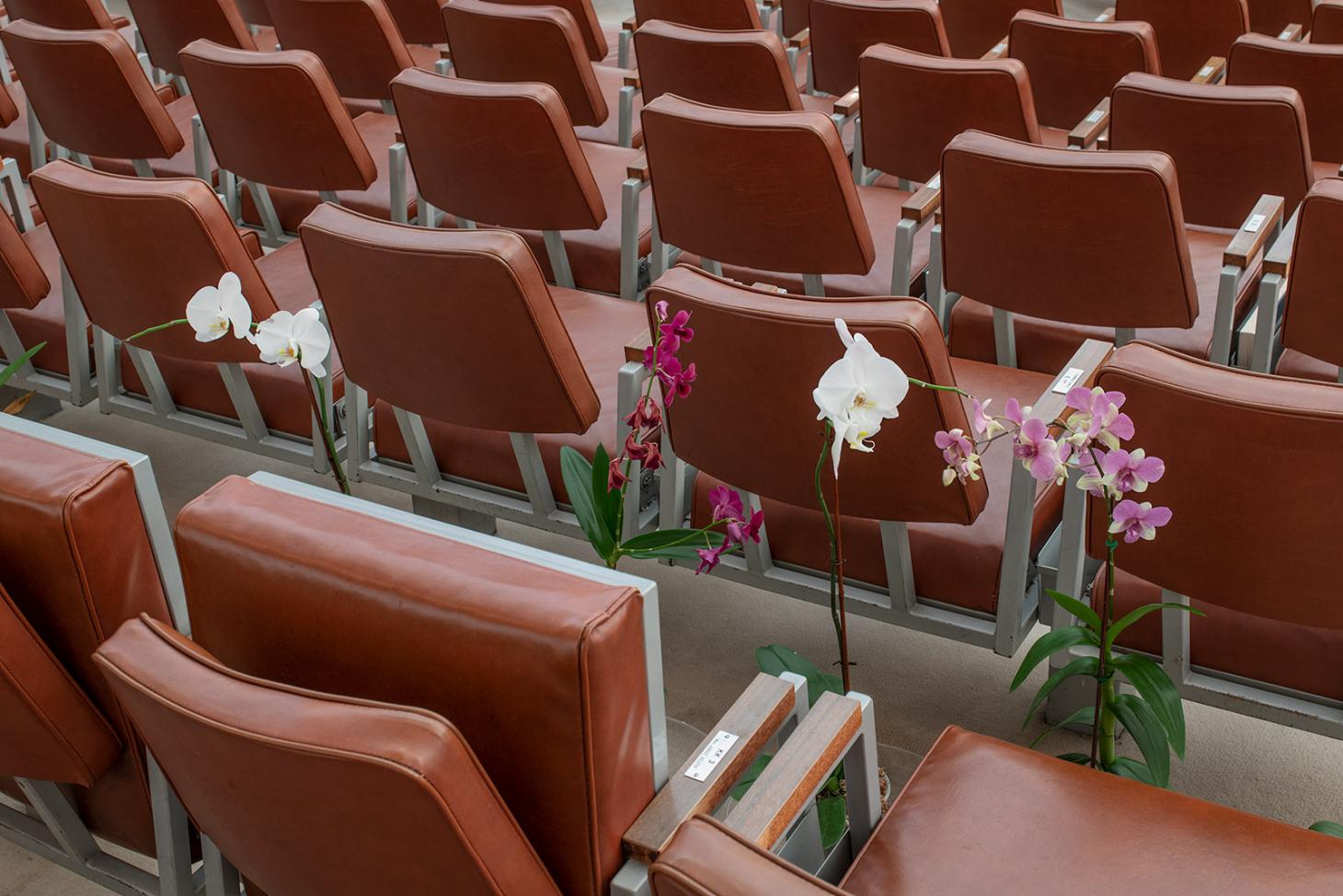
The result is Hartt’s ‘The Histories (Le Mancenillier)’, a subtly captivating installation of moving image, tapestry, sound and objects, occupying the building’s entrance floor and the main ceremony hall. At the core of the artist’s statement lies a parallel between the Black and Jewish diasporas, defined by mobility, adaption and survival. This message is embodied in the installation by music from the 19th-century New Orleans composer Louis Moreau Gottschalk, whose Jewish and Creole heritage is reflected in his eclectic compositions.
Hartt tells Wallpaper*, ‘I’ve been thinking about the building’s potential future as an architectural ruin and wanted to commemorate that aspect in relation to community-building,’ adding that he borrowed Wright’s understanding of consistency in design for his own work. Known for his visually discreet yet thematically piercing multidisciplinary interventions, the artist has brought nature inside the abashedly glamorous interior, enticing visitors to reflect on equilibrium and transcendence, on par with the building’s spiritual function.
‘The contrasting media that make up the installation create an ambient environment throughout the synagogue’s interior, renegotiating the audience’s experience of the space and the histories that unfold,’ explains Ackers, who is partial to architectural legacies and holds a curatorial position at Philip Johnson’s The Glass House in Connecticut. ‘Rather than focus on the authorship of the building, David was drawn instead to the broader history of the congregation and its ability to shelter a generous and porous concept of community.’
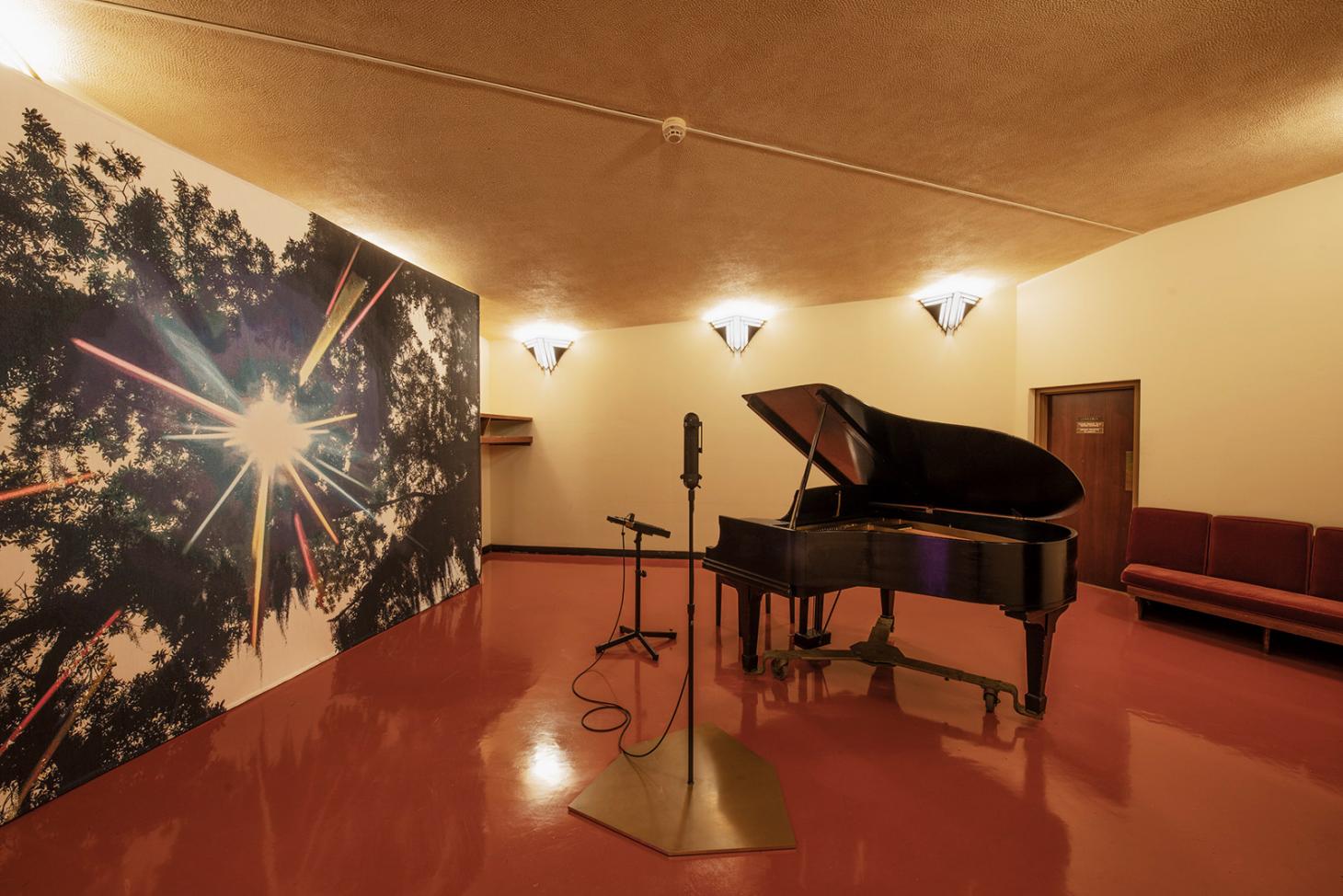
Hartt replaced faux decorative plants with locally-sourced flowers that now live under light metal fixtures he personally designed to spotlight their graceful beauty. In the synagogue’s women’s section, a custom-made Belgian tapestry is emblazoned with a horizontal orchid, blown up larger than life. An adjacent screen streams Hartt’s silent shots of the Caribbean flora. A dazzling flicker of light pulled from the film decorates another tapestry in the men’s section, where a piano is occasionally activated by a line-up of musicians organised by Haitian-born and Pennsylvania-based baritone, Jean Bernard Cerin, to play Jewish and Caribbean music from the 19th and 20th centuries.
Elsewhere, 170 orchids, each in a transparent pot, populate the seating area in the main hall, which is permeated by recordings of Ethiopian pianist Girma Yifrashewa’s interpretation of Gottschalk. Orchids, famous for their easily adaptable nature, are silent stand-ins for the displaced, honouring the lives uprooted in the face of colonialism or Holocaust. In Hartt’s nuanced placement, they seem human, each singularly unique in its own beauty, yet collectively a manifestation of unison and strength, elevated by Yifrashewa’s mellow tunes.
A handful of plants sit isolated from two main arrangements on either side of the stage, dotted around the carpeted floor or occasionally perching on a seat. As poetic as it seems, the inspiration for the placement came out of necessity and beautifies the plastic buckets that the staff otherwise uses to collect leaking rainwater: a striking marriage between the rhythm of Wright’s building with Hartt’s orchestration of orchids, sounds, and memories
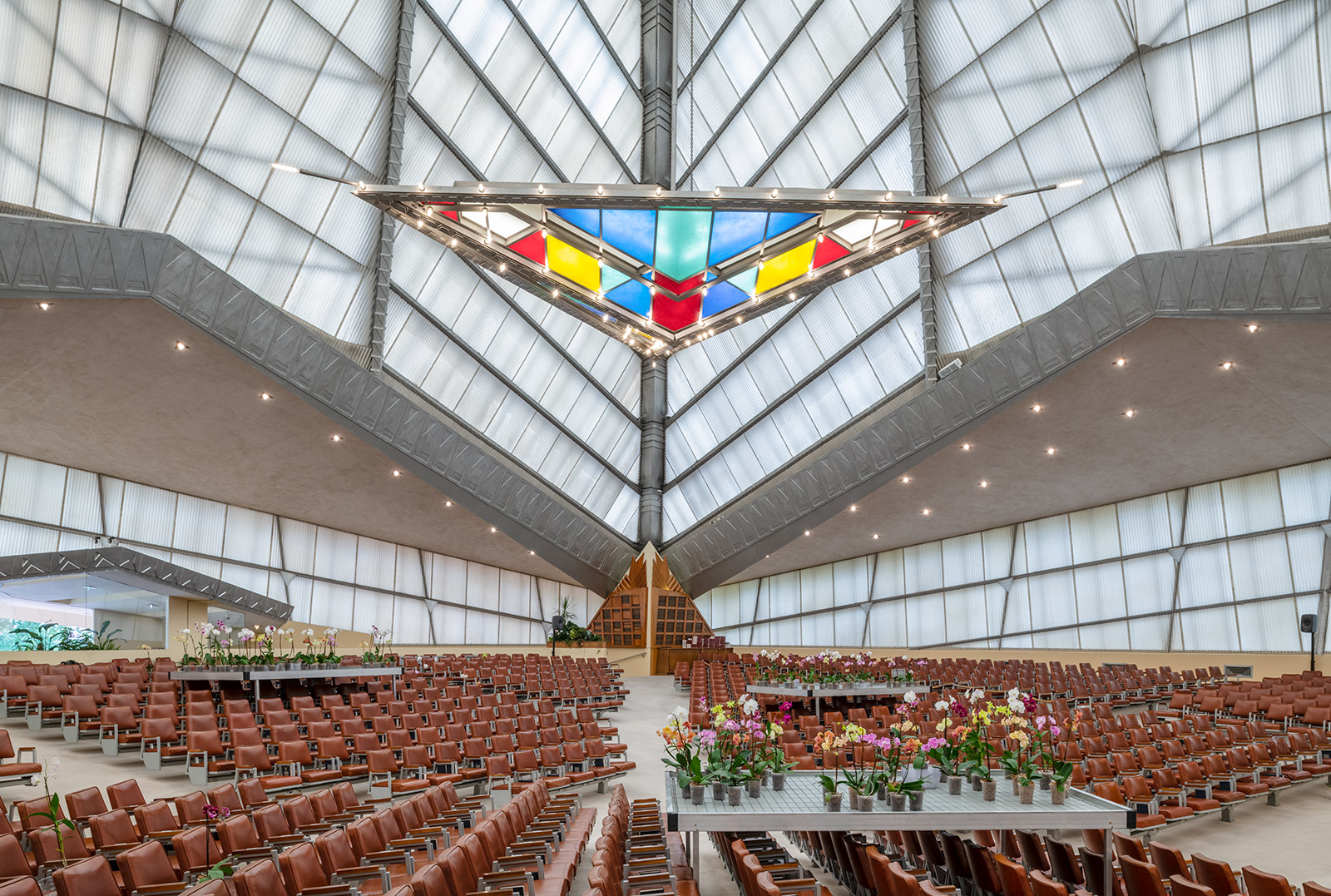
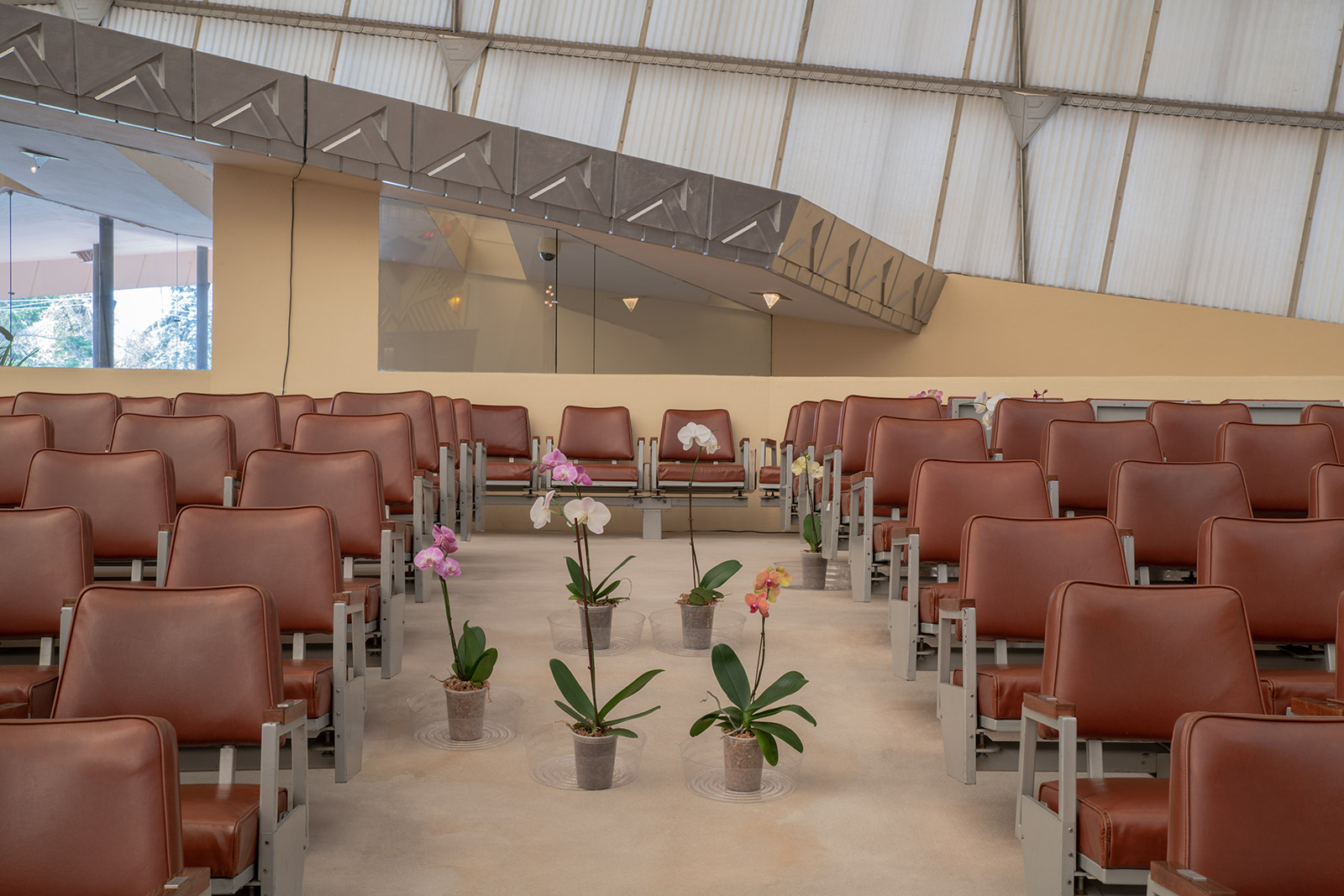
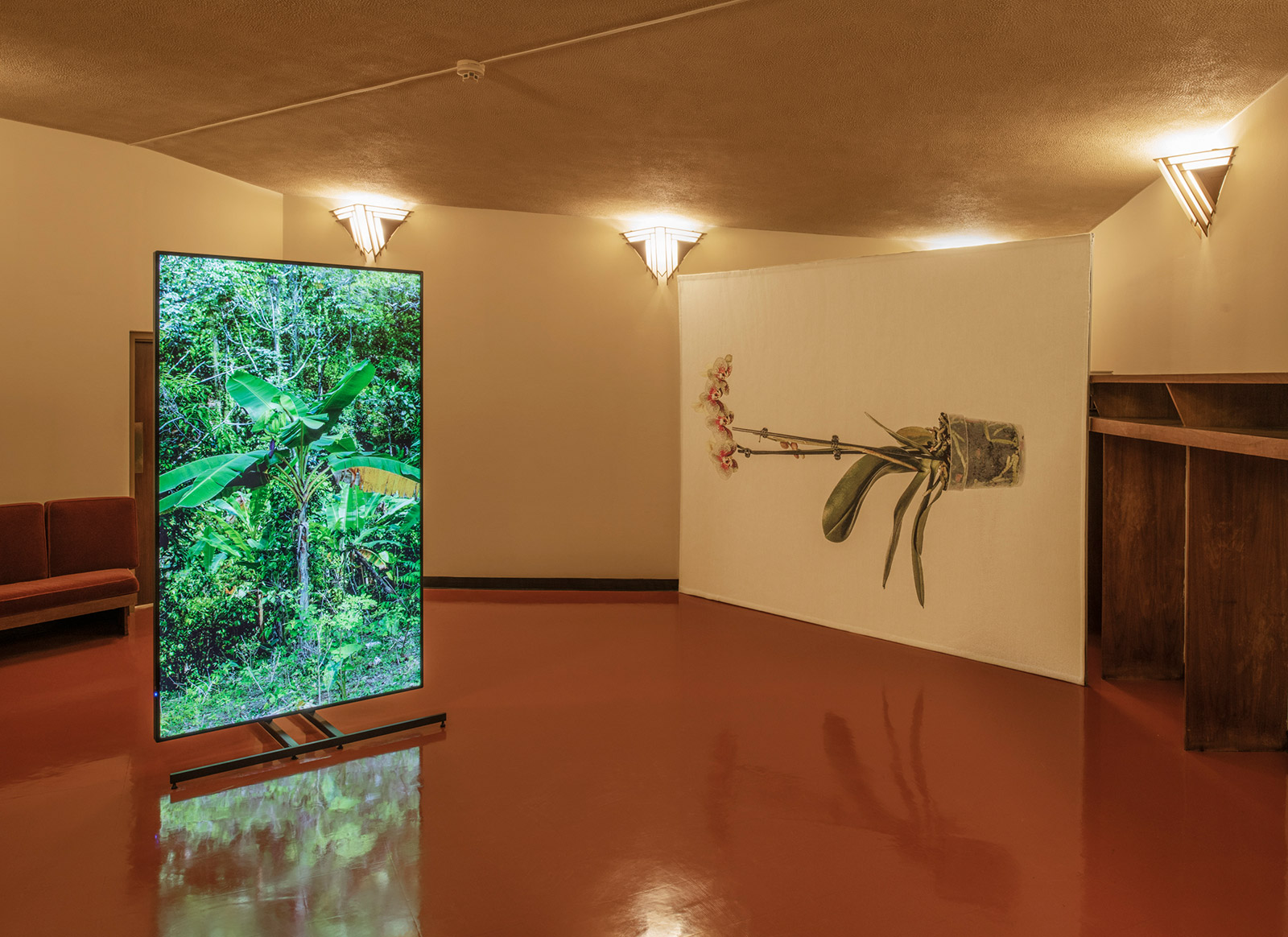
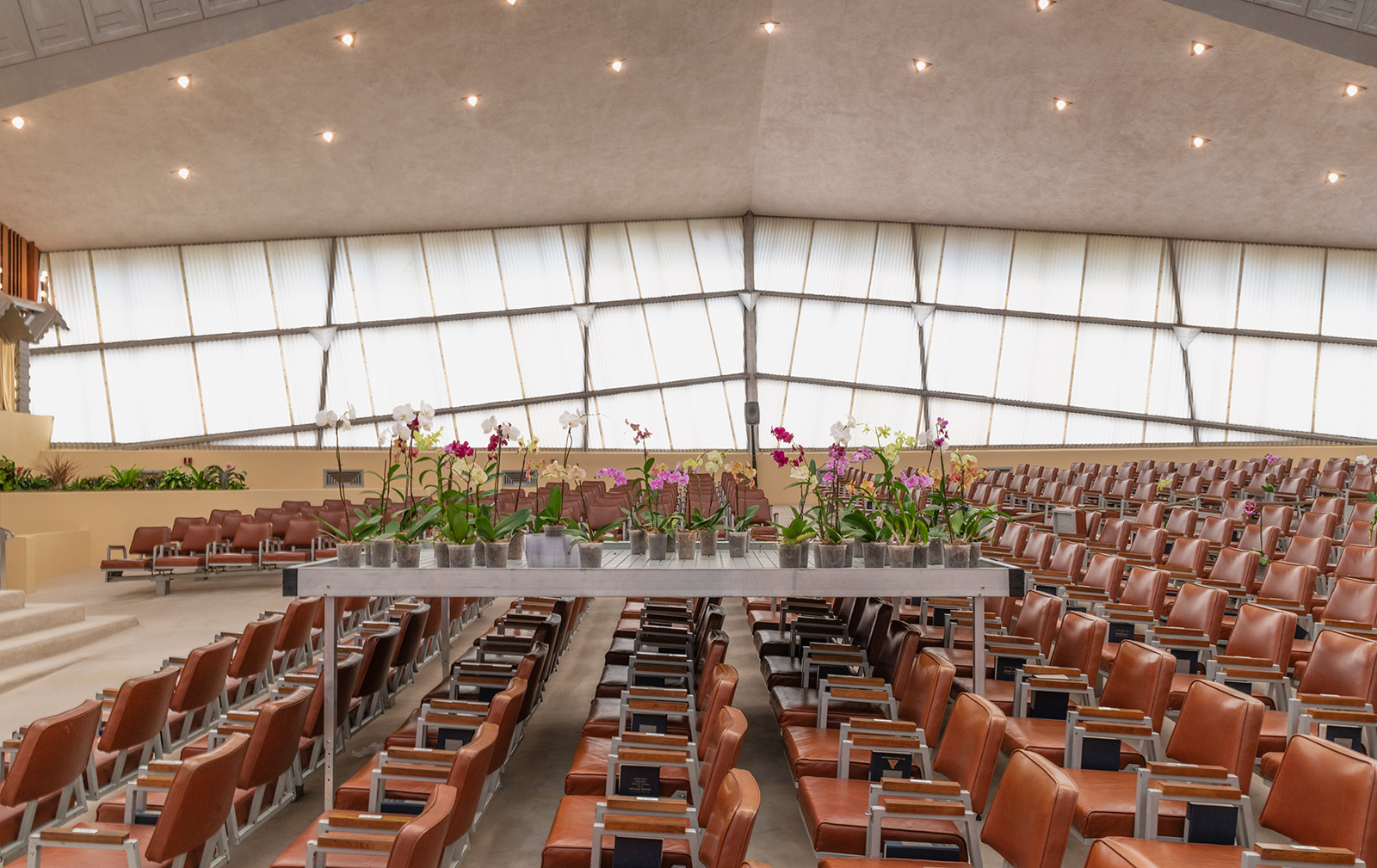
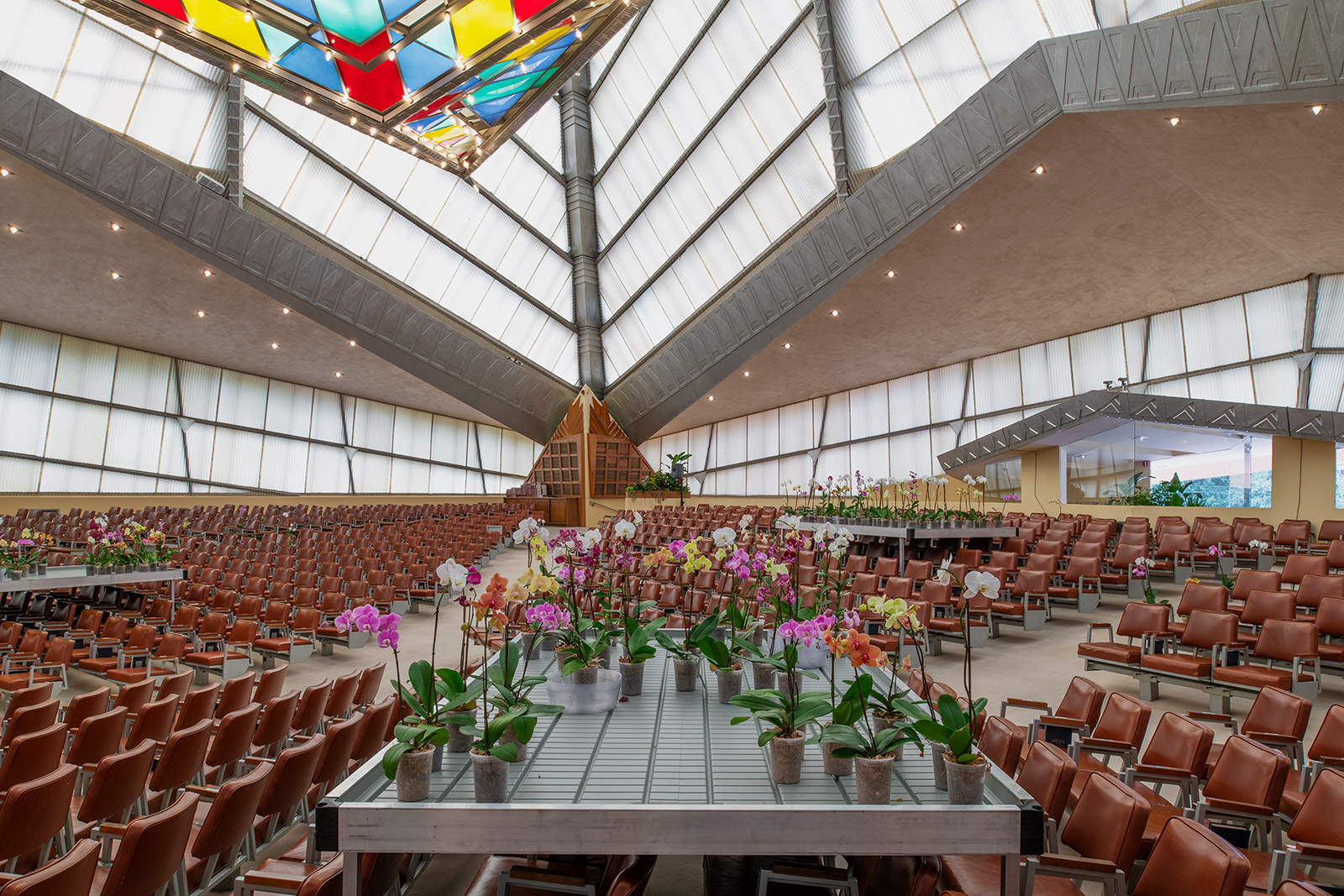
Information
‘David Hartt: The Histories (Le Mancenillier)’, until 19 December, Beth Sholom Congregation. bethsholompreservation.org
Address
Beth Sholom Congregation
8231 Old York Road
Elkins Park
Philadelphia
Receive our daily digest of inspiration, escapism and design stories from around the world direct to your inbox.
Osman Can Yerebakan is a New York-based art and culture writer. Besides Wallpaper*, his writing has appeared in the Financial Times, GQ UK, The Guardian, Artforum, BOMB, Airmail and numerous other publications. He is in the curatorial committee of the upcoming edition of Future Fair. He was the art and style editor of Forbes 30 Under 30, 2024.
-
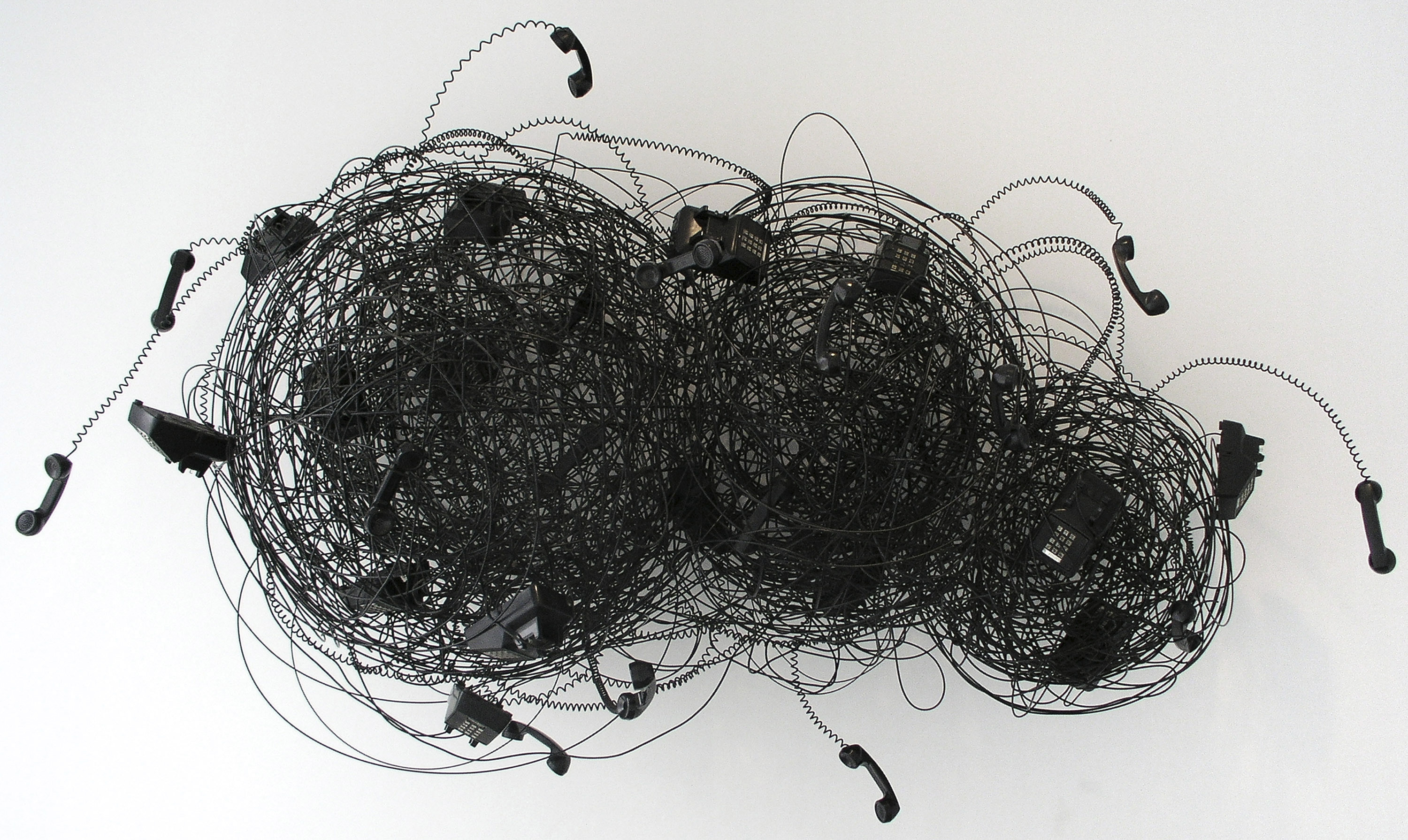 Robert Therrien's largest-ever museum show in Los Angeles is enduringly appealing
Robert Therrien's largest-ever museum show in Los Angeles is enduringly appealing'This is a Story' at The Broad unites 120 of Robert Therrien's sculptures, paintings and works on paper
-
 The Wallpaper* style team recall their personal style moments of 2025
The Wallpaper* style team recall their personal style moments of 2025In a landmark year for fashion, the Wallpaper* style editors found joy in the new – from Matthieu Blazy’s Chanel debut to a clean slate at Jil Sander
-
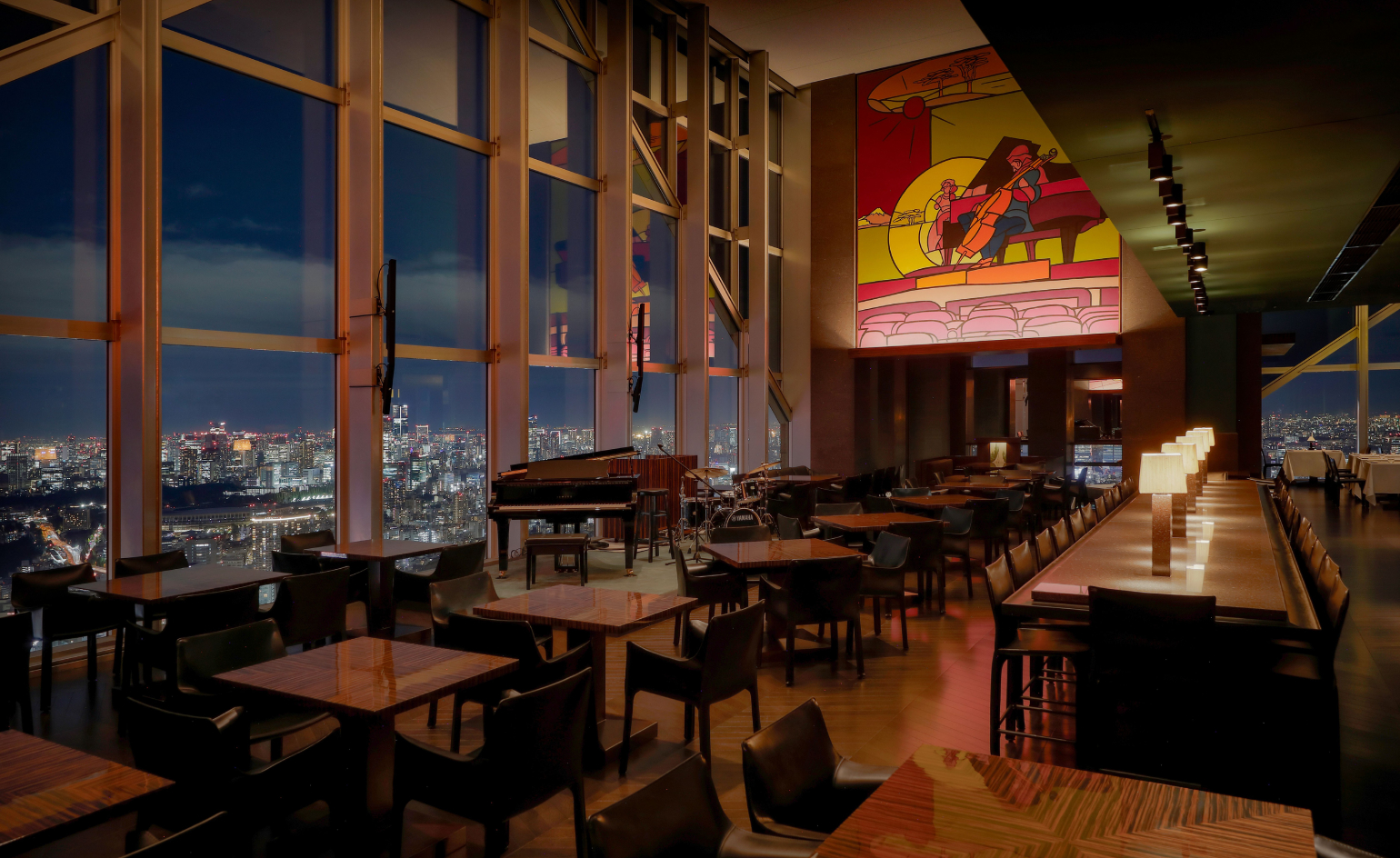 Tokyo’s most cinematic stay reopens as an exercise in architectural self-control
Tokyo’s most cinematic stay reopens as an exercise in architectural self-controlPark Hyatt Tokyo and Studio Jouin Manku demonstrate how design can evolve without erasing memory, balancing modernist heritage with contemporary comfort
-
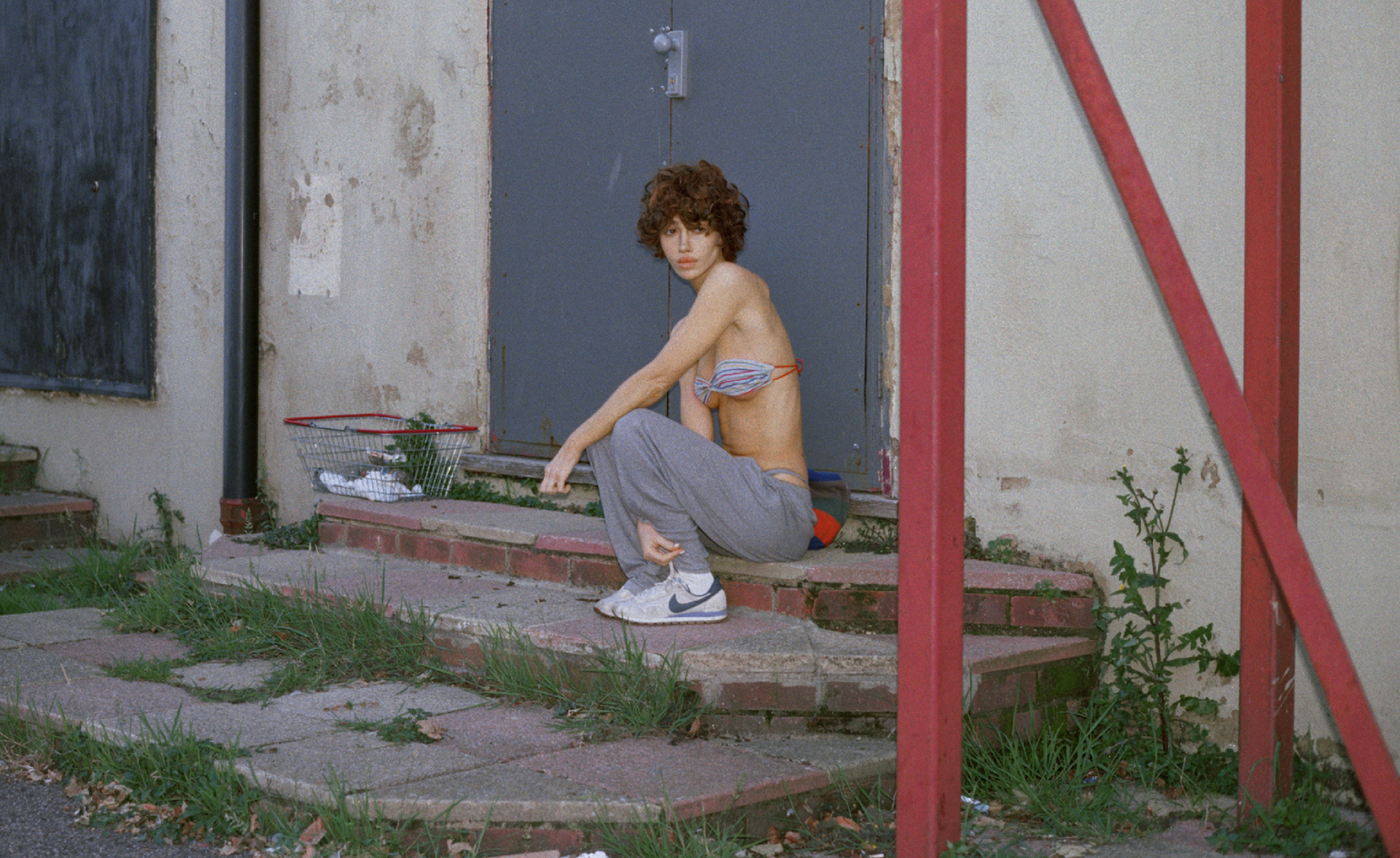 Nadia Lee Cohen distils a distant American memory into an unflinching new photo book
Nadia Lee Cohen distils a distant American memory into an unflinching new photo book‘Holy Ohio’ documents the British photographer and filmmaker’s personal journey as she reconnects with distant family and her earliest American memories
-
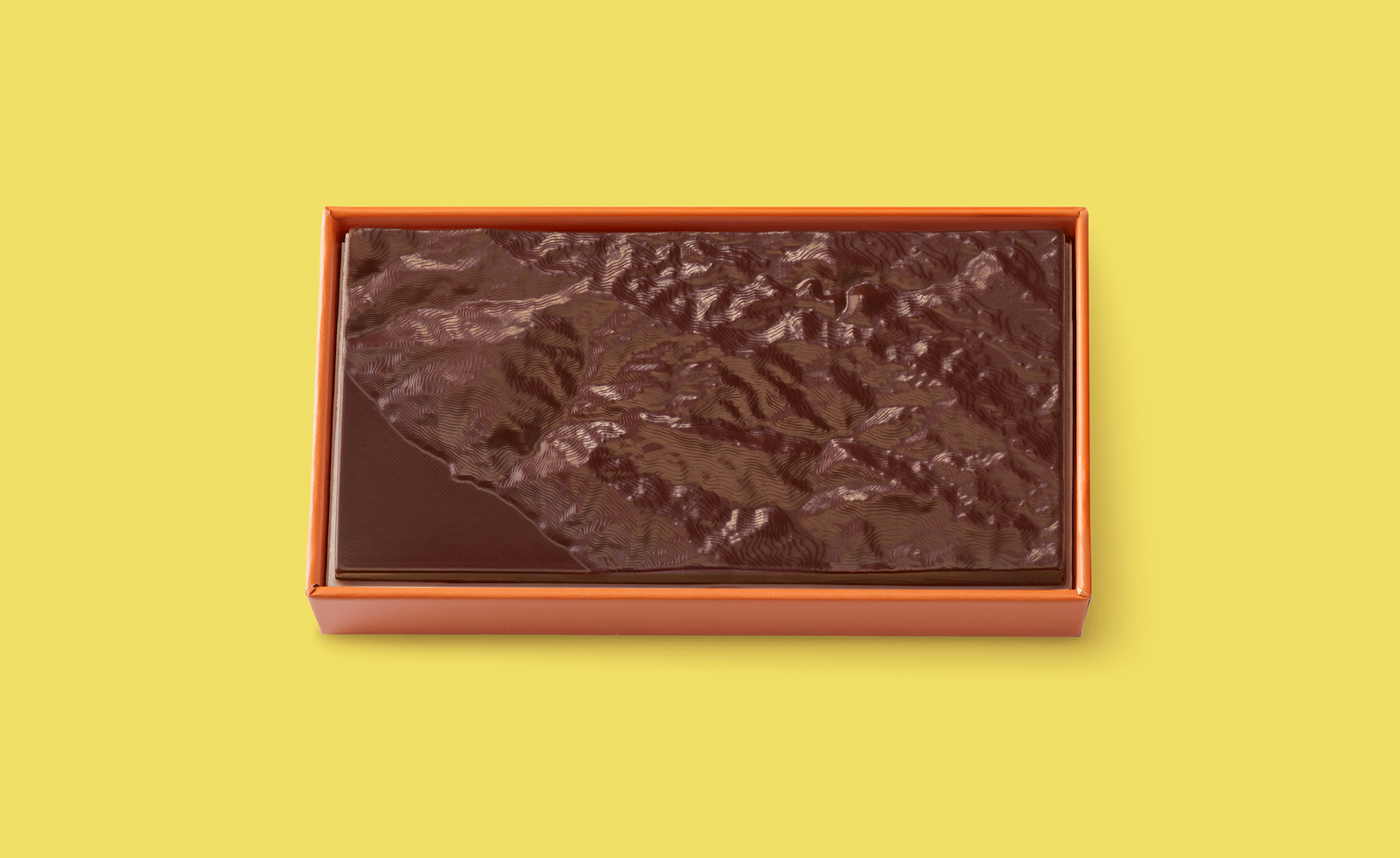 Ed Ruscha’s foray into chocolate is sweet, smart and very American
Ed Ruscha’s foray into chocolate is sweet, smart and very AmericanArt and chocolate combine deliciously in ‘Made in California’, a project from the artist with andSons Chocolatiers
-
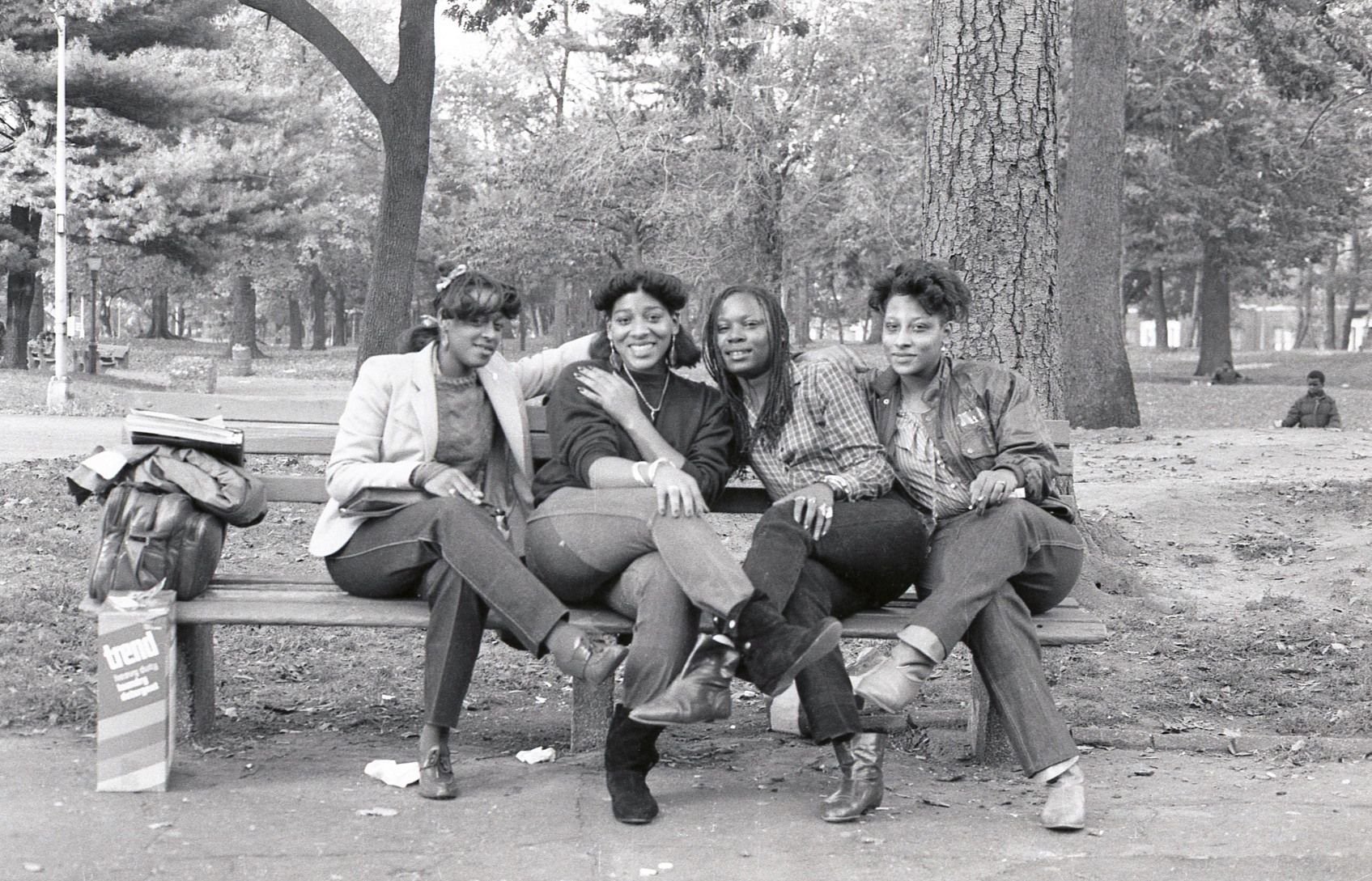 Jamel Shabazz’s photographs are a love letter to Prospect Park
Jamel Shabazz’s photographs are a love letter to Prospect ParkIn a new book, ‘Prospect Park: Photographs of a Brooklyn Oasis, 1980 to 2025’, Jamel Shabazz discovers a warmer side of human nature
-
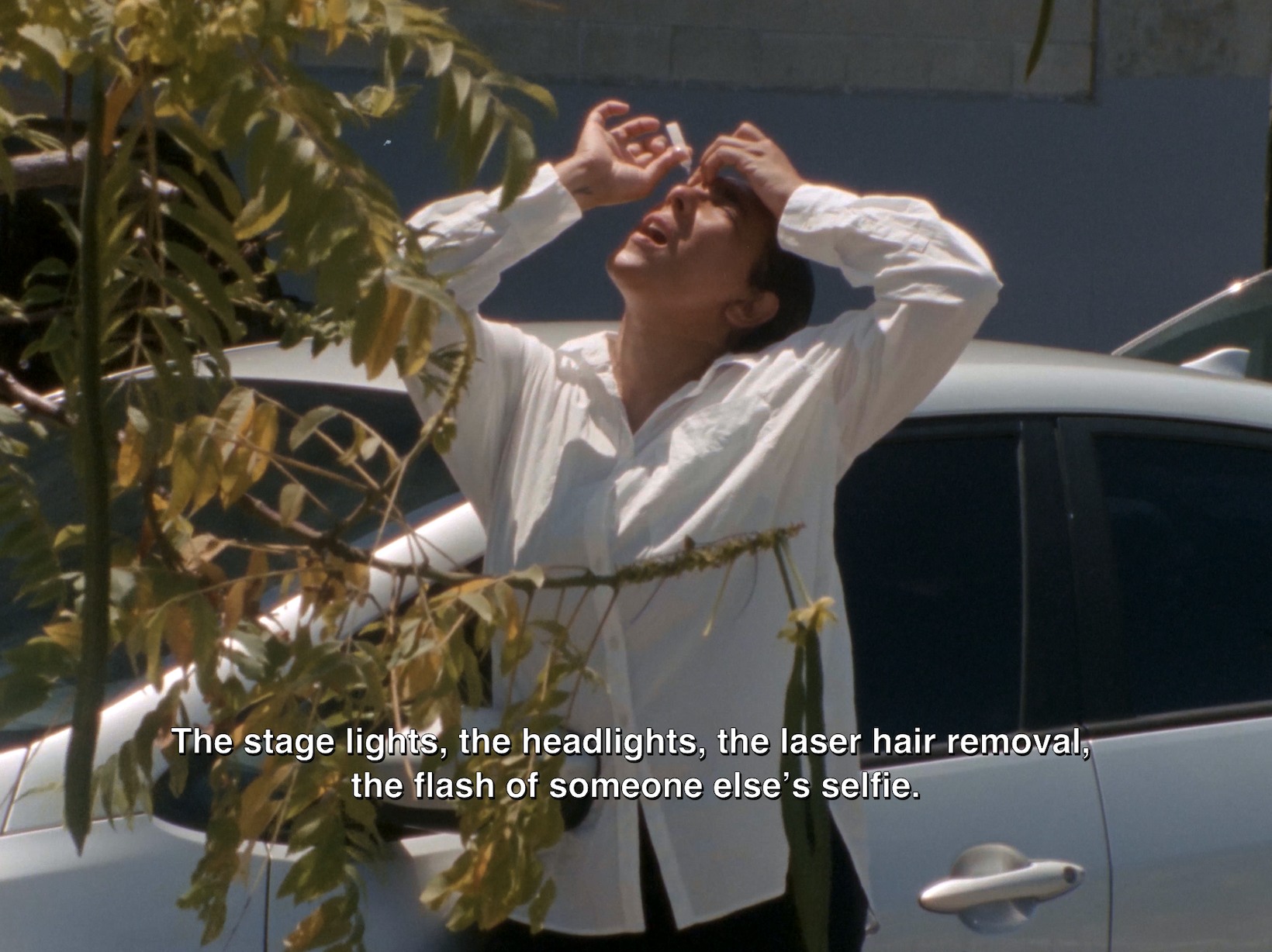 The Hammer Museum in Los Angeles launches the seventh iteration of its highly anticipated artist biennial
The Hammer Museum in Los Angeles launches the seventh iteration of its highly anticipated artist biennialOne of the gallery's flagship exhibitions, Made in LA showcases the breadth and depth of the city's contemporary art scene
-
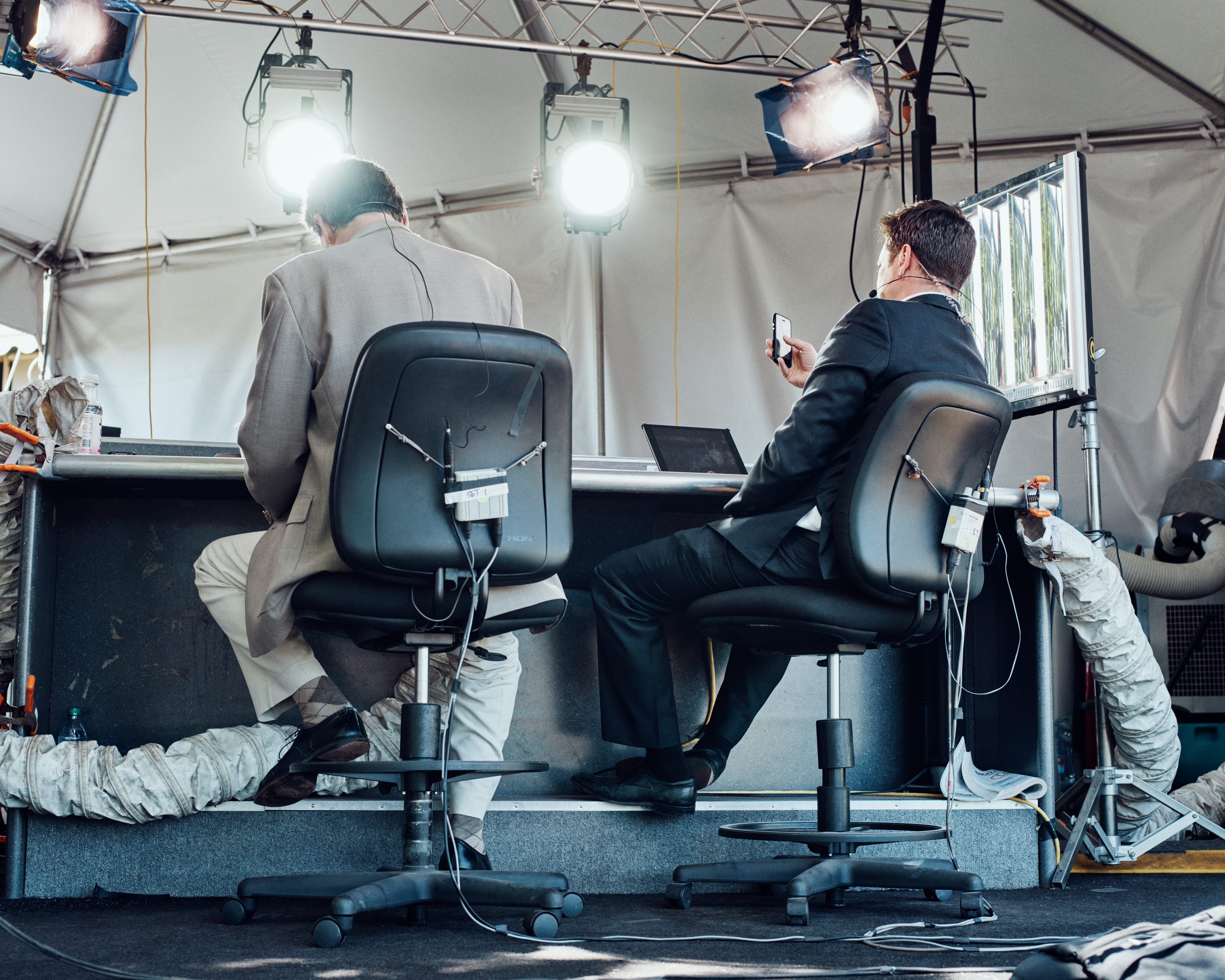 Thomas Prior’s photography captures the uncanny fragility of American life
Thomas Prior’s photography captures the uncanny fragility of American lifeA new book unites two decades of the photographer’s piercing, uneasy work
-
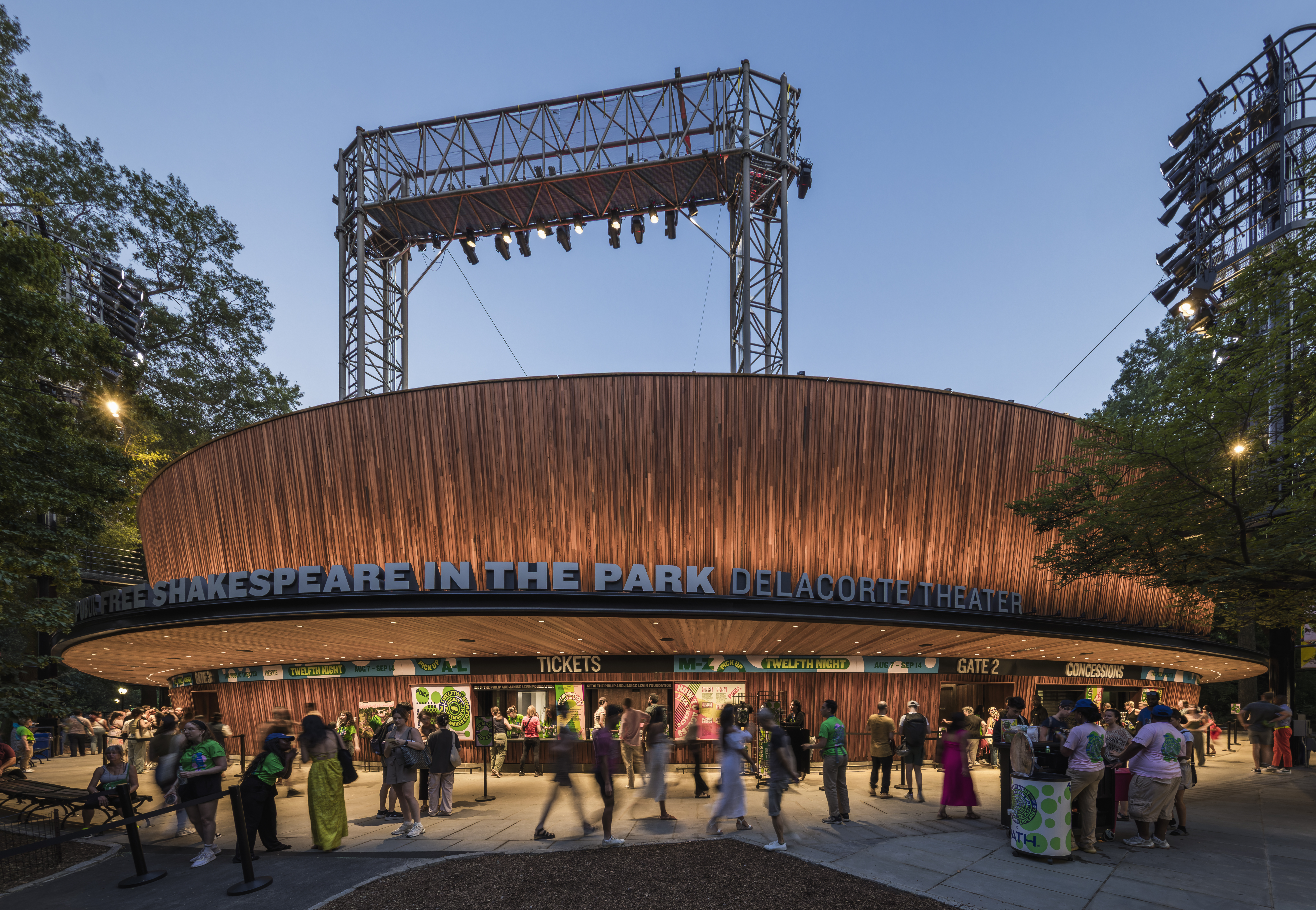 Central Park’s revitalised Delacorte Theater gears up for a new future
Central Park’s revitalised Delacorte Theater gears up for a new futureEnnead Architects helmed an ambitious renovation process that has given the New York City cultural landmark a vibrant and more accessible future
-
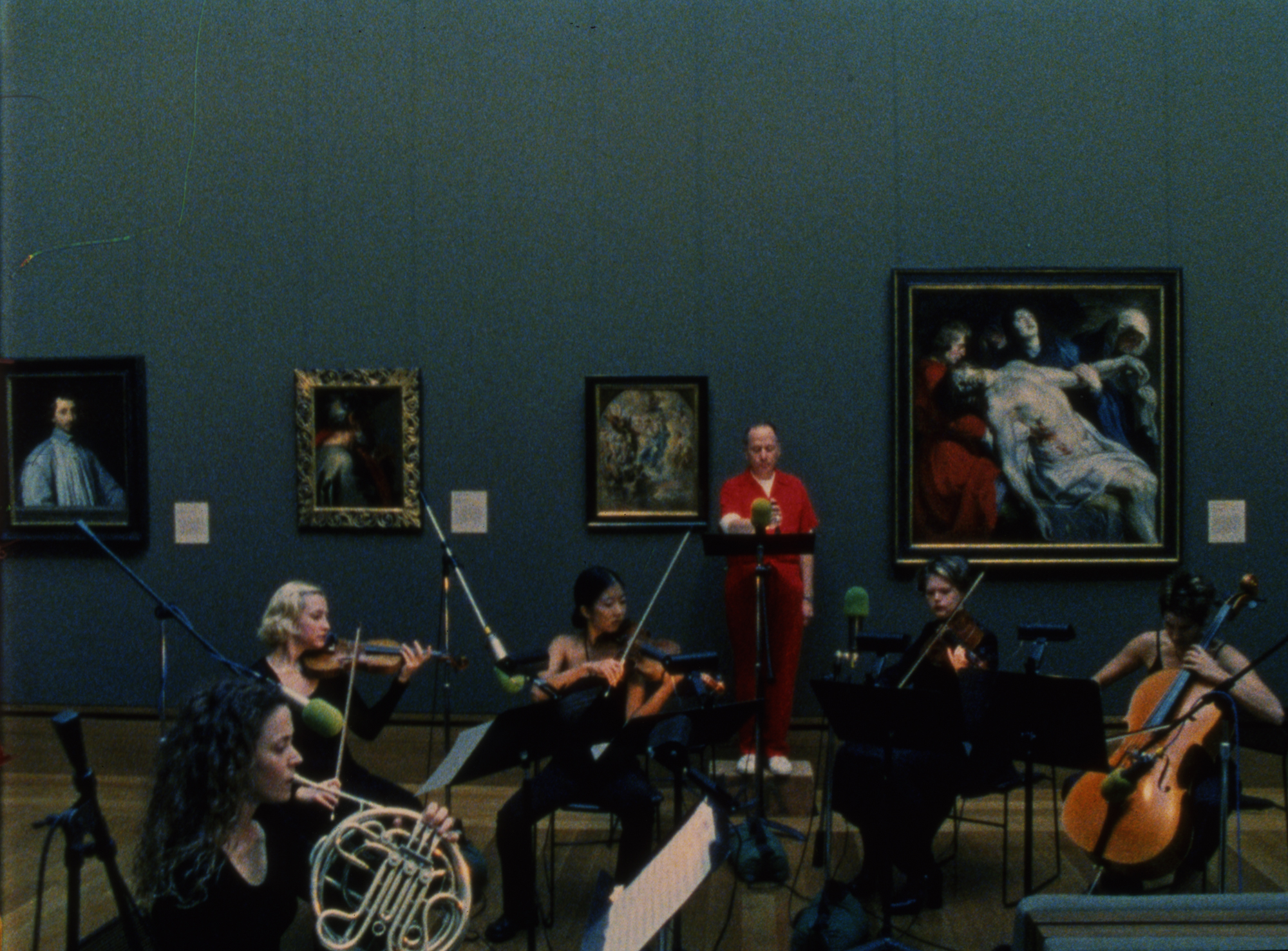 Stephen Prina borrows from pop, classical and modern music: now MoMA pays tribute to his performance work
Stephen Prina borrows from pop, classical and modern music: now MoMA pays tribute to his performance work‘Stephen Prina: A Lick and a Promise’ recalls the artist, musician, and composer’s performances, and is presented throughout MoMA. Prina tells us more
-
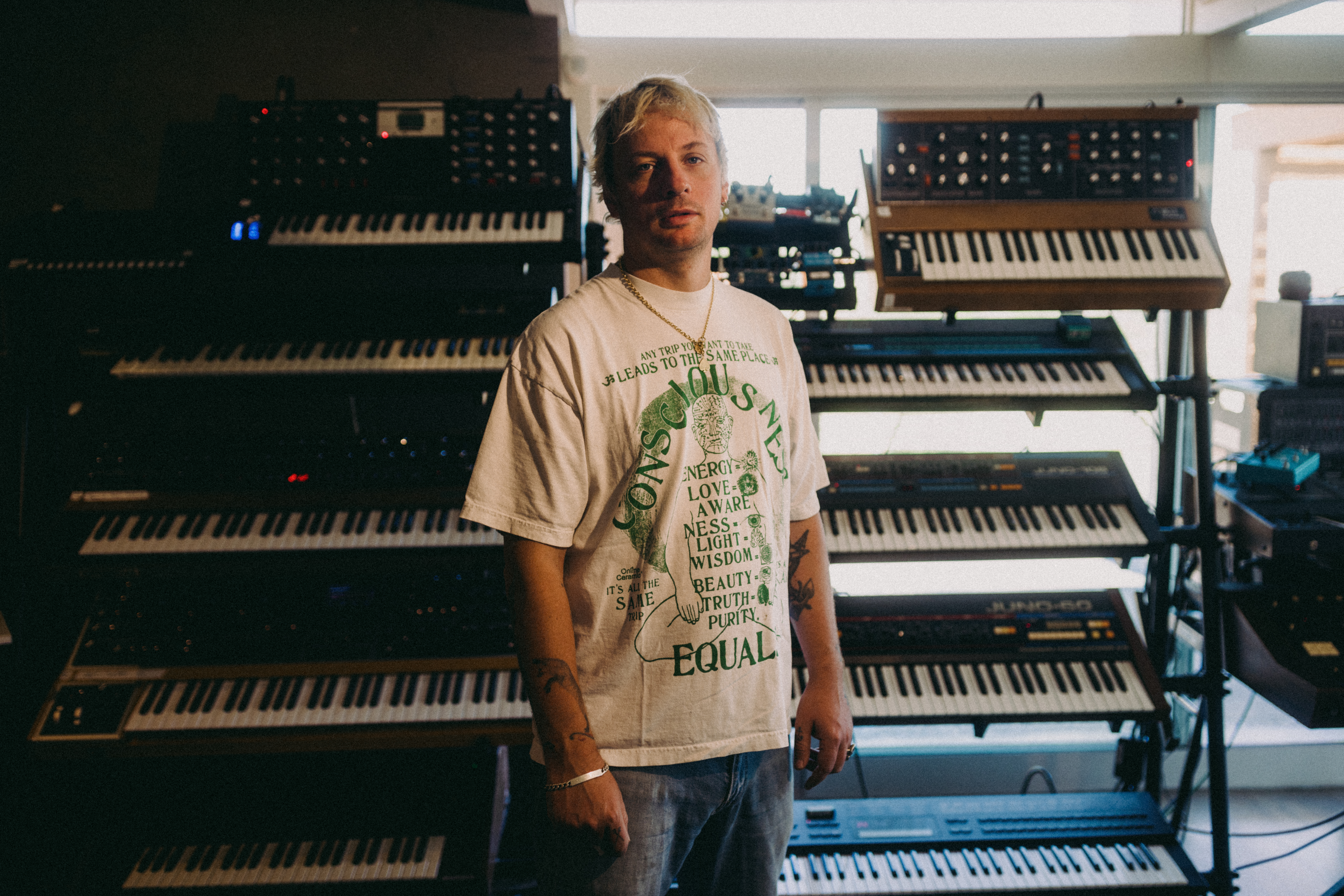 Curtains up, Kid Harpoon rethinks the sound of Broadway production ‘Art’
Curtains up, Kid Harpoon rethinks the sound of Broadway production ‘Art’He’s crafted hits with Harry Styles and Miley Cyrus; now songwriter and producer Kid Harpoon (aka Tom Hull) tells us about composing the music for the new, all-star Broadway revival of Yasmina Reza’s play ‘Art’